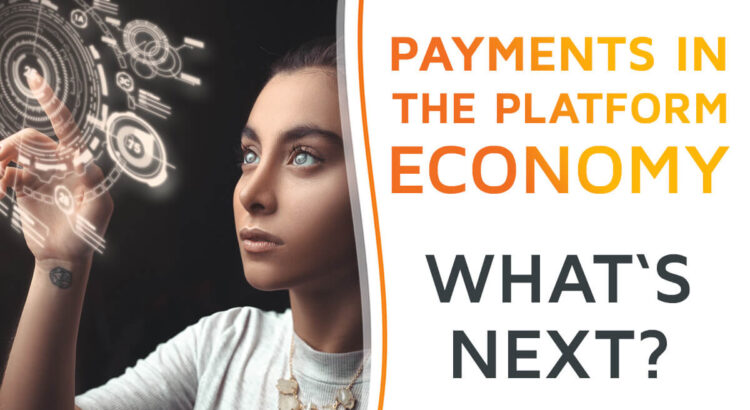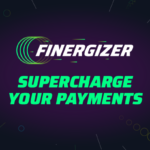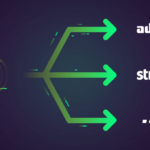
If you live in a developed country in the modern world you probably do your shopping on Amazon, connect with your friends on Facebook, book your apartment for holidays via Airbnb, order a pizza at Delivery Hero and call an Uber car if you don’t want to drive yourself.
Each one of these companies is an example of a digital platform business and all together they build a so-called “platform economy”.
There are many definitions of what a “platform” is. In the broader meaning, a platform can be any kind of online sales, transaction or technological framework allowing people to connect for any kind of economic, technological or social interaction. Some sources differ between “online matchmaking” and “innovation” platforms, some mention more types of platforms, for example, “innovation platforms” (like Apple iOS or Google Android), “transaction platforms” (like Airbnb, Etsy), “integration platforms” (combining capabilities of innovation and transaction platforms) and “investment platforms” (like Priceline or OpenTable). There is no unique approach in the classification of the platforms.
In the context of this article, we will look at the digital matchmaking platforms (also called transaction platforms) in the first place, like the above-mentioned Amazon, Airbnb, TaskRabbit, Etsy or eBay. The goal of these businesses is to give their users the opportunity to find a service, worker, resource or product that is best fitting to their needs with the lowest possible transaction costs. We will have a special focus on how those platforms are doing the payment processing part for their customers as we believe that frictionless payment is one of the key success factors for online matchmaking providers. And the most interesting challenge would be to try predicting how the payment experience may look in the next stage of economic development, in the so-called post-platform world.
How to Pay in the Platform Economy
The rise of matchmaking platforms began around the turn of the millennium when the paradigm of how businesses were offering their services and products online started to change. The most fundamental characteristic of a platform is the presence of the network effect, which is also known as Metcalfe’s law: the greater the number of users (and by “users” we mean both buyers and sellers of services and goods) with the platform, the more valuable the platform becomes to the community.
The benefits of the platform economy are somewhat obvious: the small and medium businesses can reach out to more customers using platforms instead of offering their products and services online on an isolated company page. The customers benefit from a big variety of services and goods that they can buy at the same place at the same time in one transaction without having to search and combine different online resources. And the platforms make money by getting paid for the intermediation and add-on services like payment processing, logistics/delivery or insurance of the goods, just to name a few.
Let’s have a closer look at the payment services. Payment on a transaction platform is only a part of the purchase process that starts with a customer’s search for certain goods and services and ends with the fulfilment of the paid order. The entire purchase process should be designed as convenient, easy and straightforward as possible to guarantee a great experience ensuring that the customer will come back to the platform to buy again. For the payment part it means especially: the checkout flow should be embedded in the purchase process as seamlessly as possible. And the platforms should also offer as many payment options as possible to fit the expectations of different customer groups on a global scale, from instant payment methods like credit card payment to cash on delivery to the current hottest trend Buy Now, Pay Later (actually well known in Germany for years as “purchase on account”, “Kauf auf Rechnung”).
If you’re working in the online payment area, you know that a payment flow may look quick and easy for the customer but has a high complexity behind the scenes. First you need to collect the funds from the customer. And then the money that was received from a single customer for a single order may have to be distributed to multiple parties: sellers, suppliers, drivers, delivery services and the platform providers. So a solid payment infrastructure is one of the most important parts of the platform environment.
Buy or Build
There are different approaches to how the big platforms are addressing the payment processing challenge.
1. Process Via Third-Party Payment Service Providers
Many platforms are relying on third-party payment service or ewallet providers like Adyen or PayPal. This approach has the benefit of outsourcing the responsibility for payment facilitation to external companies, so that the platform itself doesn’t need to take the associated financial and legal risks or to be compliant with financial regulations or PCI DSS (payment card industry data security standard).
The disadvantage of this setup is also not hard to see: the platform company has only a limited influence on the design and implementation, on customization options, on the choice of supported local payment methods in a certain country or any further development of the payment system – thus it has a limited influence on the customer experience during the checkout flow which might be a competitive disadvantage. The vendor lock-in could become another drawback of this option: if you are dependent on one single payment service provider, you have too little room to move when negotiating with them about financial conditions or service-level agreements.
2. Do it yourself
As we’ve seen, handing over the reins of the payment process has several downsides. Thus many big platform companies decide to take the difficult option to become payment service providers or even emoney institutions themselves. Delivery Hero’s fintech solution, Amazon Pay, Zalando Payments, Alipay of Alibaba, Uber Money etc. were established as payment solutions custom-tailored to the specific needs of the respective platforms, just to name a few examples.
Some of them even go one step further, break away from their mother platforms environments and offer their in-house-built payment systems to the outside world becoming a full-fledged payment service provider. And again some platform giants get into the payment business directly like Apple or Google Pay, bypassing the stage of building payment solutions which are meant to be used only and exclusively on their own in-house platforms.
Embedded Finance
Regardless of what approach a platform provider decides to go for, the main goal should be the customer satisfaction, both of buyers and sellers.
The buyers expect the payment flow to be smooth and comfortable. They should not have to fill out X forms before they can actually hit the pay button. They should not have trouble understanding what the next step or the status of their payment is. Ideally, the payment should bring as little disturbance into the entire purchase flow as possible.
The sellers also expect the trouble-free handling of multi-sided payments with the correct distribution of funds, transparent fees and billing, accurate reconciliation and reporting and just-in-time payouts on a regular basis.
When we talk about the importance of offering a great payment experience we actually mean the importance of providing the so-called embedded finance services. Generally speaking, with embedded finance we mean the offering of financial services in originally non-financial environments. If you are interested in learning more about it, please check out our article on this topic.
What’s Next?
We talked about the current situation and online payments in the platform economy. Let’s now have a look in our crystal ball at possible future scenarios.
Let’s try to imagine the next development stage: How will we pay in a kind of “post-platform” economy? How will the social and economic concepts change, and what will the interaction among different participants in the new world look like? Will we all live in a version of a so-called Metaverse, the virtual world according to Epic Games, Facebook, Microsoft and Co? In this vision, there will be open and closed platforms in the Metaverse that will be connected on a next level with each other to a kind of a “meta-platform”.
Right now every platform solves the challenge of providing great financial services single-handedly. For the consumers, this means: whenever they use a new platform they have to provide their payment instrument data and go through all identity checks that are required by the platform owner in accordance with local regulations, at least once. Thus, in the future world where platforms are interconnected, there is still a lot of room for improvement of the customer payment experience. It should be remodelled and developed into an easier and more comfortable process, ideally unified across the Metaverse.
When we follow this train of thought about a “seamless, frictionless payment experience”, somewhen we will arrive at the station where we are in the environment, paying everywhere without actually providing any payment data. It may sound strange, but it’s the next logical step in the current development: let’s call it “pay by identity”. We believe that in the future you will be able to consume products or services without paying, just by identifying yourself as a certain person. You can imagine it like “Amazon Go” in the virtual world: you “go in”, identify yourself, choose a product or use a service and then simply “go out”. The payment will completely happen in the background.
Of course, there are some technical hurdles to overcome before the digital identity will be ready for the outlined payment use case, but it will happen sooner or later. Probably sooner thanks to the Covid-19 pandemic that made both business and government institutions aware of the importance of digitization of their services, in a bit of an unpleasant manner. For example, the European Commission is showing strong interest in the development of a cross-border technology for digital identity, it announced its plans for a European Digital Identity framework in June 2021.
Some of you will say: what about privacy, it sounds like we run into the danger of becoming citizens with no secrets. You are right, “pay by identity” scenarios assume that most people don’t really care about privacy as long as they can get benefits and comfort in exchange for their data. Nowadays many people share a lot of private live details on Facebook with the entire world, use cashback services like Payback, constantly check in on Foursquare and so on, allowing big companies to collect big data about them. Why should they care about privacy in the future?
Of course, there are still people that don’t want to become fully transparent and trackable. They will probably look for alternatives, anonymous ways of payment in the Metaverse like Bitcoin and other cryptocurrencies, “the virtual cash”.
It’s hard to say exactly what the possible payment paradigm shift will mean for payment players like banks, credit card schemes, card issuers, acquirers, payment service and ewallet providers. Even if the payment industry follows a different development scenario, it won’t stay the same. So the only thing that we can predict for sure is that payment companies have to stay flexible and innovative to be able to quickly adapt to the changing world.
Supercharge your payments with Finergizer!
Our cutting-edge on premise payment orchestration platform Finergizer helps you to stay ahead of the pack. Drop us a line to info@trimplement.com and get a free consultation!



